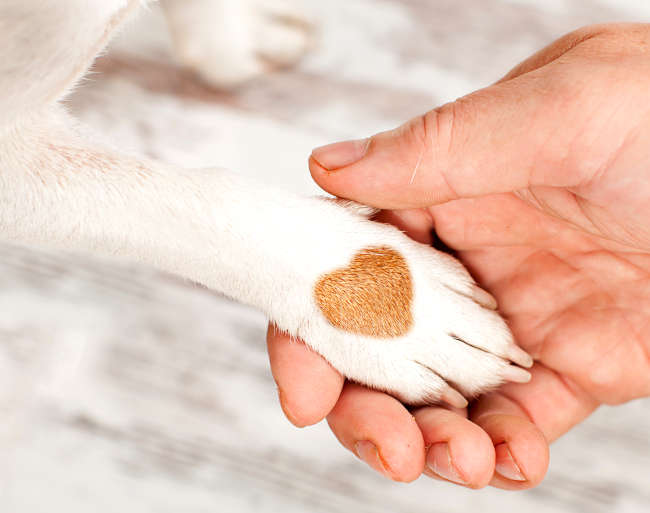If you’re thinking about getting a puppy, you should seriously consider adoption.
Adopting a pup is a great way to give an unwanted dog a second chance, while also finding a four legged friend to share your life with. The fact of the matter is that adoption save lives, and by providing a loving home for a special pup that truly needs one, you’re often saving that dog from a life of cruelty or from being euthanized. With that in mind, let’s take a look at a few more reasons why you should adopt, the adoption process, and some helpful thoughts on preparing your home for a new puppy.
With the information below, you’ll be able to make a decision whether the adoption path is right for you, and know how to move forward through this exciting new adventure.

10 Reasons Why Adoption is Best
If you still aren’t quite sure whether adoption is right for you, take a look at these 10 reasons why adoption is so amazing …
1. You are saving a life
According to the ASPCA, approximately 1.5 million shelter animals are euthanized each year in the United States alone. There are just too many pets ending up in shelters or rescue centers, and not enough people wanting to adopt. If you adopt a pup, you are saving that dog’s life.
2. You help your local community
By supporting your local dog shelter or rescue society, they can continue doing great work and saving lives. They are taking stray or abandoned dogs off the streets, which helps to reduce the risk of infectious diseases, pet overpopulation, and even dog bites. Many of these organizations are also extremely important in helping to get lost pets back to their owners.
3. You save money
Most dogs that are up for adoption are dewormed, up to date with their vaccinations and neutered. Some might even be microchipped already too. You usually need to pay an adoption fee, but overall you can save a lot of money.
4. It helps put a stop to puppy mills
Puppies from pet shops or online ads are often from a puppy mill, where the dogs are kept in poor conditions and repeatedly bred for financial gain. Through adoption you can help to put a stop to puppy mills, making sure that irresponsible breeders and puppy farms don’t get any support.
5. You can find a great pup
Shelters have a wide range of pups waiting for their forever homes, from pedigrees to mixed breeds, little or large and long haired or short haired pups.
6. Health benefits
There are many health benefits of owning a pet, including helping to keep you fit and healthy. According to the CDC, regular dog walking can decrease blood pressure and cholesterol levels. Additionally, a recent study published in Scientific Reports, has shown that owning a dog is linked to a longer life and a decreased risk of heart disease.
7. The feel good factor
If you adopt a pup, you can feel free to brag about it all over Facebook and Instagram. You are going to feel pretty darn proud that you rescued that cute ball of fluff.
8. You help more than one dog
The good thing about adoption is that you don’t just help ONE animal, you end up helping MANY more. By adopting one pup, you contribute funds to help the shelter save more animals and free up a shelter space for another pet who desperately needs help.
9. Social benefits
A study, published in the Journal PLOS One, shows that owning a pet increases your likelihood to exercise, socialize and even make new friends. Having a pup is a great icebreaker to meet and talk with new people in the park.
10. You will change your pup’s whole life
By providing a loving home to a pup in need, you are changing his entire world. Luckily dogs are pretty good at giving unconditional love back, so your life will be changed for the better too.
What You Need to Know Before Adopting
Before you jump into a big decision such as adopting a pup, you need to decide whether you have enough time, energy and money to dedicate to a new member of the family. Let’s look at some important points to consider before deciding if adopting a pet is right for you:
- Commitment
If you adopt a puppy you are making a commitment to look after him for the rest of his life, which is usually around 10-15 years for dogs.
- Exercise
Do you have time to walk your pup every day? You also need to dedicate some time to playing, teaching basic commands and socializing your pup, as these are all important to help him grow up to be a happy and confident dog.
- Money
You need to make sure you can cover the cost of dog food, and extras such as food and water bowls, a bed, a collar, dog identification tags and toys. Can you afford routine veterinary treatment (such as vaccines, deworming, flea and tick treatment)? Can you cover dog insurance or emergency veterinary costs if your pup has an accident or gets sick?
- Space
Do you have a garden? Maybe you live near a dog park? You need to think about where you can walk your dog, and where he can go to the toilet. Puppies can take a few weeks to toilet train, which can be easier if your pup has regular access to green space.
- Patience
A puppy requires a lot of love, dedication and patience. They are learning everything in a new and exciting world. If you don’t have the time to dedicate to a puppy, adopting an older dog might be a better option for you.
If you think you have all these points covered, then it seems like you are ready for adopting a puppy!

What Type of Dog is Best for You?
If you know you can make the long term commitment to provide a great home for a puppy, then the next important decision is what type of dog is best for you. Your lifestyle, exercise habits, the amount of time you spend at home and where you live, are all important factors to help decide which dog is a good fit for your home.
The shelter staff are experts at helping to advise what type of dog would be a good fit for your family. Some dog breeds need much more exercise than others. For example, if you want to find a running partner, a Labrador is a better choice than a Pug. If you live in a small apartment, a large breed dog, might not get the space it requires.
Try not to focus on one specific breed, keep your options and heart open for finding the right match!Shelters have lots of amazing dogs, large and small, mixed or pure breeds, different personalities and colors, long haired or short haired, all waiting for their forever home.

Where to Go to Adopt a Puppy?
There are many different dog shelter and rescue associations doing great work out there.
- Look for an established and reliable shelter, which cares about it’s animals.
- Check if vaccines, deworming and neuter/spay is covered in the adoption fee.
- Ask your friends, family or your veterinarian for a good local recommendation.
- You could complete an online search for dogs up for adoption in your area.

What Is Involved in the Adoption Process?
Every shelter and rescue association has a slightly different adoption process and requirements. Some have longer interviews, some allow you to adopt the dog that same day and others don’t, and some ask you to bring your other pets for a meet and greet first. A common dog adoption process might include these steps:
- Find a pet for adoption (this might be online or while visiting a shelter)
- Submit an application for adoption
- Meet rescue dogs, or spend time with your chosen pup to make sure he is a good match for you
- Have an interview with a shelter counselor
- Pay the adoption fee (you usually need to provide a photo ID)
- Get a copy of the pup’s medical record (e.g. vaccinations, neuter/spay certificate)
- Take your new puppy home!

What Does the Adoption Interview Involve?
The shelter counselor wants to make sure that you are a suitable candidate for adopting a dog, and that the pup will have a happy, loving and long term home. Some questions will be aimed towards making sure that your chosen pup is a good match for you. If you have fallen in love with an energetic pup, they will want to make sure that you have the time and energy to give it lots of exercise. A study by the American Humane Association in 2013, found that 1 in 10 pets adopted from a shelter were no longer in that home six months later. They ask you certain questions to find out if you are ready to make the big commitment that a puppy needs, and that the dog wont be returned to the shelter again. They aren’t trying to catch you out, they just want to make sure that each dog goes to a good home.

What Type of Questions Will They Ask During the Interview?
Here are some example questions that are often asked during a dog adoption interview:
- Who is in your household?
- How many kids and adults live in your home?
- Does everyone want a new dog?
- Where do you live?
- Do you live in an apartment or house?
- Do you rent?
- Is your landlord ok with pets?
- Do you have a garden?
- Is there a dog park/green space nearby?)
- Do you have any experience with dogs?
- Do you have any other pets at the moment?
- What is your job?
- Can you financially support a new dog?
- Will you be leaving your dog alone for long periods of the day?
- What is your lifestyle like?
- Do you have hobbies?
- Do you enjoy a very active outdoor lifestyle such as hiking and running?
- Or do you prefer to relax on your time off?
- Why do you want to adopt this dog?
The interview is not an exam, and you should try to answer every question truthfully. The shelter counselor just wants to make sure each pup goes to a great home, and that you are a good match for your chosen pup.
After chatting with the shelter counselor, hopefully you are one step closer to bringing your new puppy home!

How to Prepare your Home for a New Puppy?
Here are some suggestions for preparing your family and home to welcome your new pup.
- Make some “dog rules” (e.g. no dogs on the sofa, no human food for treats) and get everyone in the household on board with them. Puppies will learn what is right and wrong faster if everyone has the same approach.
- If this is your first puppy, then do some research. It’s good to be prepared with some basic knowledge on the needs of your pup such as food and toilet training.
- Be prepared. Have all the essentials ready in advance, such as puppy food, a lead and collar, bowls and bed.
- Get a nice comfy bed for your pup, and a puppy safe soft toy to cuddle at night (it might help him adjust to his new home, he is only a baby after all).
- Check your house plants aren’t poisonous.
- Move small (some puppies will eat anything!) or breakable objects out of reach.
- Cover or block any obvious cables to prevent chewing.
- Roll up and store any expensive rugs until the new puppy is house trained.
- Give your pup enough chew toys, so he will be less likely to chew on things around the home.
- Get some healthy puppy treats as a reward for good behavior (your new pup will be getting lots of treats as he is learning basic commands and toilet training, and many dog treats are full of nasty, unhealthy ingredients).
- Use a dog crate and gates to confine your pup when you are not at home or at night.
Most importantly, have fun with your puppy in this new and exciting chapter of your life!
Final Thoughts
Adopting a puppy will change your life. You might need to go for early morning walks and have your slippers chewed, but in return you will get unconditional love from a pup who thinks you are his entire world. Unfortunately, far too often dogs end up in shelters through no fault of their own. Through adoption you can give a dog a second chance at finding a loving and forever home.
Good luck with your adoption process!
References
American Society for the Prevention of Cruelty to Animals. (2020).
Pet Statistics. Retrieved 28/03/20 from ASPCA: https://www.aspca.org/animal-homelessness/shelter-intake-and-surrender/pet-statisticsCenters for Disease Control and Prevention. (2019).
About pets & people. Retrieved 28/03/20 from CDC: https://www.cdc.gov/healthypets/health-benefits/index.htmlLines, E., Steneroden, K., Bonnett, B., Salman, M. D., Moulton, C. (2013)
Keeping Pets (Dogs and Cats) in Homes: A Three Phase Retention Study. Phase II Descriptive Study of Post Adoption Retention in Six Shelters in Three U.S. Cities. American Humane Association. https://www.americanhumane.org/app/uploads/2016/08/petsmart-keeping-pets-phase-ii.pdfMubanga, M., Byberg, L., Nowak, C. et al. (2017)
Dog ownership and the risk of cardiovascular disease and death – a nationwide cohort study. Sci Rep 7:15821 https://doi.org/10.1038/s41598-017-16118-6Wood, L., Martin, K., Christian, H., Nathan, A., Lauritsen, C., et al. (2015)
The Pet Factor – Companion Animals as a Conduit for Getting to Know People, Friendship Formation and Social Support. PLOS ONE 10(4): e0122085. https://doi.org/10.1371/journal.pone.0122085







Trackbacks/Pingbacks